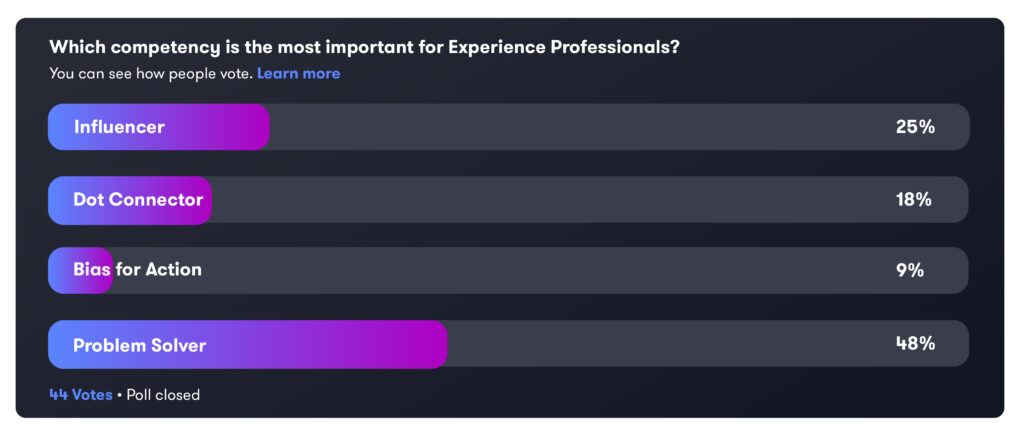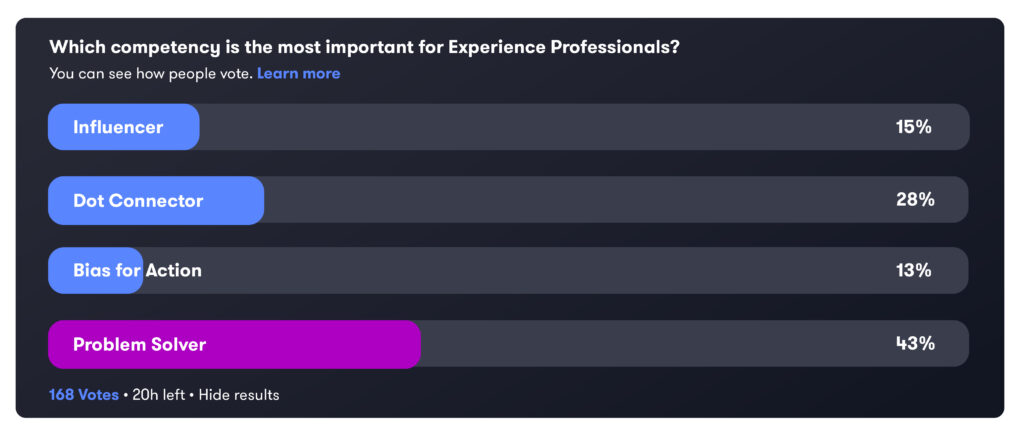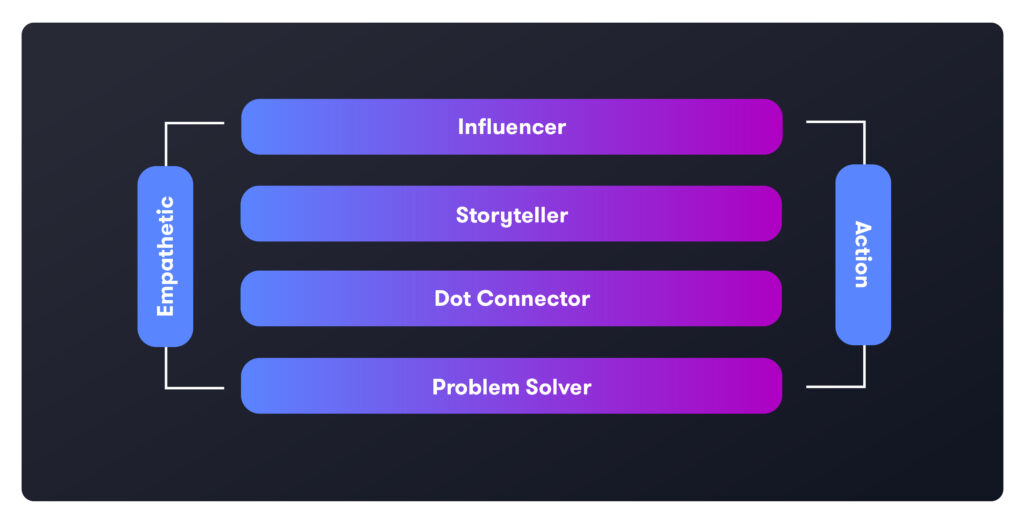INSIGHTS & ARTICLES
6 Competencies of Highly Effective Experience Professionals

The customer experience and employee experience have become strategic moats for brands. With digital brand growth and the great resignation in full swing, customers and employees have leverage, and companies are heavily investing to understand their experiences today.
In my opinion, the greatest challenge facing retail brands is having an effective experience leader to guide the overall customer and employee experience strategy. Without this key individual, the brand’s experience strategy can become disjointed, siloed within verticals, and often times, a creator of friction instead of positive business outcomes.
Not all brands are afflicted with this disfunction, though. Leading experience brands understand the importance of running a holistic customer and employee experience strategy. They have created Chief Experience Officer roles within their organizations, which are responsible for leading these strategies forward. This high-level position, which typically reports directly to the CEO, is meant to accelerate the brand, increase brand equity, increase customer and employee loyalty, and improve key business metrics like same-store sales revenue and customer churn.
So, what makes a brand lag behind when it comes to experience? Usually, organizations with disjointed strategies are too focused on their NPS score. As a result, they create a dysfunctional culture that does not lead to positive business outcomes.
I have been fortunate enough to act as Executive Advisor to more than 200 retail brands around the world, many of which are considered to be top experience brands by customers. The following six competencies – which I have personally validated by consulting experience professionals in my LinkedIn network – have been the most common among the top leaders I have worked with.
Before we break down the six competencies, let’s explore the results of the LinkedIn polls:
(Top – my personal network; Bottom – a CX Network Group I belong to)


The Experience Competency Model
Overall, the feedback from more than 200 professionals validated the importance of these competencies: influencer, empathetic, bias for action, storyteller, problem solver, and dot connector. Furthermore, I conducted an analysis of the professionals who responded to the poll, including their role within their organizations, and built the following Experience Competency Model for skill building and professional development:

1. Influencer
The customer and employee experience journeys have become more complex, with multiple stakeholders involved in a single interaction. When customers provide feedback regarding a specific experience, the feedback spans across multiple departments responsible for the experience. As experience professionals, our role is to utilize customer feedback and data to influence optimizations and enhancements, creating positive experiences that meet the organization’s goals.
The experience professional must therefore be able to influence cross-functional stakeholders through data and storytelling. Reed Good, Senior Director, Branded Retail at Comcast, provided this insight: “The ability to influence across organizations and teams to get meaningful work done is a critical competency as I believe the others roll into it. You have to help those whose help you require to understand the bigger picture and convince them that your priority is indeed their priority.”
According to Will Huffman, Vice President of Customer Experience at Brinks Home, “CX leaders need to be able to influence other peers and leaders to take action on enhancing the experience. Most successful CX leaders I’ve come across have a bias for action but can be limited in their span of control. Thus, they need to be able to collaborate, influence, etc. with peers to take action. Getting others on board greatly accelerates the pace of change and collective buy-in.”
2. Empathetic
This competency may seem like a no-brainer for experience professionals, but it means much more than just connecting with your customers and acknowledging their feelings. When an experience breaks down and creates a customer service issue, the experience professional must also be able to connect with their cross-functional stakeholders, who are often under prioritization constraints from leadership. Experience leaders are the loudest advocates for their customers, and the most skilled ones will know how to balance advocacy with their colleagues’ list of priorities.
3. Bias for action
in my opinion, this competency is particularly lacking among experience professionals today. I have worked with well over 400 retail brands across the world, and have been met with silence when asking the following question to experience professionals: “What actions has your organization taken based on the feedback collected from your customers?” Too many programs today are focused on benchmarking instead of taking action. Leading experience professionals understand that action is the new experience: they use their influencer skills to create a culture of action.
4. Storyteller
Storytelling is a powerful way to humanize the experience your brand is delivering by connecting the dots with data. The challenge for experience professionals today is not collecting data – in fact, brands are quite data– rich. However, this data is sitting in multiple silos within the organization, and each stakeholder can only tell a partial story based on the way their department interacts with the customer. The top experience professionals use every bit of customer data to tell the story from the customer’s perspective and illustrate how they are experiencing the brand.
5. Problem solver
Organizations are obsessively focused on growing same-store sales revenue, increasing EBIDTA, operating in a safe and compliant manner, and focusing on sustainability and social justice as strategic priorities. Each stakeholder leader within the organization will align their priorities and business outcome targets for each year to support the brand in achieving this strategy.
As experience professionals, we must use problem solving skills to align the experience strategy with the organization’s strategic priorities and ensure feedback and insights are being used to influence prioritization decisions.
6. Dot connector
Another common challenge facing brands is connecting the dots to articulate and demonstrate the value of customer and employee feedback. Many brands focus solely on experience benchmarks like Net Promoter Score (NPS) and/or Customer Satisfaction (CSAT), but they fall short on unstructured data like text analytics.
According to Emily Hawkins, Former Director of Inventory Planning and Fulfillment at Brightstar Corporation and Founder and Owner of Your Life, Your Coach, “You need someone who understands how they affect change. If I do X, Y happens. The majority of seasoned professionals actually don’t understand this and because of it creates needless tasks, levels of bureaucracy, and headaches all over the place that cost time and money. When someone understands whom they support above and how they connect it with the work being done below them AND how they can pull either of those levers for more support/productivity, BOOM! Huge explosion in productivity that doesn’t actually require any additional work hours.”
Top experience professionals understand what their organization is trying to achieve and can connect the dots regarding how the strategy impacts the customer and employee experience.